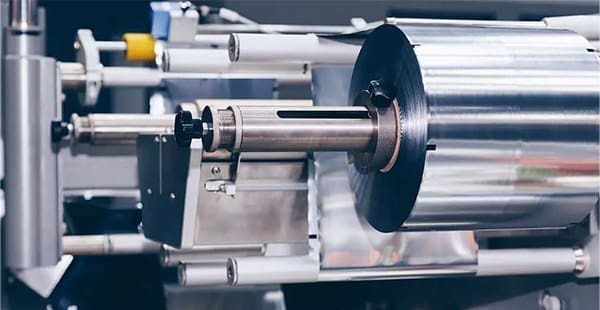How Was Asbestos Used at Aluminum Plants?
Asbestos had many desirable properties for use throughout the metalworking industry, including in aluminum plants. The mineral was able to withstand the industry’s use of corrosive chemicals, high-voltage electric power and high temperatures. As a result, asbestos was heavily used throughout many sites until the 1980s.
Asbestos was frequently used in aluminum plants. The mineral’s natural heat resistance made it a common insulator for many high-heat environments. The material was also often used in steel mills and other metal works facilities. As a result of this wide use, asbestos is still present in many plants across the country.
Asbestos was used in many places throughout aluminum plants, including:
- Construction materials used in plant buildings
- Machinery used to manufacture and refine aluminum
- Fireproof safety clothing for plant workers
Aluminum plant workers were often exposed to asbestos products while working in the facilities.
The aluminum production process contained asbestos at many steps. For example:
- Asbestos-insulated smelting pots are used to melt alumina and bauxite.
- The aluminum smelting pots often required relining. This involves removing old asbestos insulation with jackhammers and replacing it with new. This process could release asbestos dust into the facility.
- After the smelting pots, the molten metal is transferred to crucibles lined with refractory brick and insulated with asbestos.
Aluminum smelters also wore fireproof and non-corrosive asbestos protective clothing to guard against the chemicals used to manufacture the metal. This clothing allowed workers to handle the hot metals and corrosive chemicals safely. However, the items often contained asbestos fibers.
Many aluminum plants still have asbestos materials in their facilities. This past asbestos use puts workers at risk of exposure today. Asbestos exposure may cause asbestos-related diseases, such as asbestosis, lung cancer and mesothelioma.
Notable Aluminum Plants That Used Asbestos
Many aluminum companies used asbestos in their manufacturing processes. The high-heat environments of aluminum work sites required materials to withstand these conditions.
This use of asbestos led to an increased risk of asbestos exposure for employees.
Alcoa Corporation
Alcoa Corporation was founded in 1888 in Pittsburgh, Pennsylvania, as the Aluminum Company of America.
Today, it is one of the world’s leading producers of aluminum. The company has expanded across the United States and has sites in 11 countries.
Alcoa used asbestos throughout its refineries and plants. The mineral helped to insulate machinery and buildings against high temperatures.
Smelting pots used to convert alumina to molten aluminum were lined with asbestos insulation. Court records confirm Alcoa’s pots each contained up to 900 pounds of asbestos in the 1950s and 1960s.
According to court records, Alcoa executives were aware of the harmful effects of asbestos as early as the 1940s. This did not stop the company from using asbestos widely up until the 1980s.
Harvey Aluminum, Inc.
Harvey Aluminum, Inc. began in 1914 as Harvey Machine. The company was founded as a tool and die manufacturer. By the mid-1900s, it expanded to become a large aluminum producer and fabricator.
One of the company’s most notable sites was its aluminum facility located in The Dalles, Oregon. Harvey Aluminum acquired the jobsite in 1954 from the U.S. government, which had built an experimental alumina plant there. The plant included six concrete filtration tanks lined with a 1/16″ thick asbestos sheet.
Environmental Protection Agency (EPA) records confirm that smelting took place at the site from 1958 to 1987. Harvey Aluminum owned the site until the early 1970s, when Martin-Marietta Aluminum acquired the company.
The plant continued to process aluminum until 1984, when it briefly shut down. After a two-year hiatus, Martin-Marietta leased the plant to Northwest Aluminum Company, which operated the plant until 1987.
In 1989, The Dalles site was added to the EPA’s Superfund National Priorities List (NPL) for hazardous waste contamination. A 15-acre landfill at the site was determined to be filled with asbestos and other waste at risk of contaminating groundwater.
The site underwent cleanup and was removed from the priority list in 1996.
Kaiser Aluminum
Businessman Henry J. Kaiser was involved in many companies and industries throughout the 20th century. One of his most profitable ventures was Kaiser Aluminum, founded in 1946 as an aluminum manufacturer. By 1949, just three years after its founding, the company was the third-largest aluminum producer in the country.
Records confirm Kaiser Aluminum began using asbestos in its aluminum plants in 1959. The company manufactured asbestos products from 1959 to 1978. Kaiser Aluminum’s asbestos-containing products include:
- Asbestos bricks
- Block insulation
- Finishing cement
- Insulation cement
- Mineral wool cement
Kaiser Aluminum used and manufactured asbestos products for decades, exposing many workers to the mineral. The company ceased its use in the 1980s as regulations began to change. In 2002, it filed for Chapter 11 bankruptcy, partially due to the growing cost of asbestos litigation.
The company formed the Kaiser Personal Injury Trust in 2006 as a part of bankruptcy proceedings. The trust was initially funded with $1.22 billion to settle asbestos claims from diagnosed individuals.
Other Aluminum Plants That Caused Exposure
Many aluminum plants across the country still contain asbestos materials. These materials are an exposure risk as long as they are present.
The following list of plants have led to known asbestos exposure.
Arizona
- Anaconda Copper Mining Company
- Magma Copper Company
California
- Alcan Aluminum Plant
Montana
- Anaconda Aluminum Company
- Anaconda Copper Mining Company
New York
- Phelps Dodge Copper Plant
Oregon
- Cascade Steel Rolling Mills
Utah
- Kennecott Copper Corp
Washington
- Alcoa Aluminum-Vancouver
- Alcoa Aluminum-Wenatchee
- Columbia Aluminum
- Harvey Aluminum
- INTALCO Aluminum-Cherry Point
- INTALCO-Ferndale
- Kaiser Aluminum & Chemical
- Kaiser Aluminum & Chemical Corp
- Martin-Marietta Corporation
- Reynolds Aluminum
Who Is at Risk of Exposure at Aluminum Plants?
Asbestos use in aluminum plants puts many individuals at risk of developing asbestos diseases, such as mesothelioma. Occupational exposure is one of the leading causes of mesothelioma.
Workers were most likely exposed during the peak of asbestos use, before 1980. However, asbestos can still be found in older plants. This may expose current workers to the dangerous mineral.
Any aluminum plant employee has the potential to be exposed to asbestos.
According to the EPA, there is no safe level of asbestos exposure. Any amount of contact with the material can lead to diseases such as mesothelioma.
It was also not uncommon for workers to accidentally expose family members to asbestos. This is called secondary exposure. Secondary exposure can occur when aluminum plant workers are exposed to asbestos and bring the fibers home on their person.
Aluminum plant workers should be vigilant about avoiding contact with asbestos, as it can cause life-threatening diseases such as mesothelioma cancer.
Asbestos Lawsuits and Compensation
Individuals who develop mesothelioma often choose to pursue mesothelioma compensation.
One common way to gain compensation is by filing a claim against the asbestos company that manufactured the products. Some companies have set up trust funds to handle asbestos claims.
Companies that do not have a trust fund may be held liable for asbestos use through a mesothelioma lawsuit. Lawsuits may go to trial and end in a verdict, or be settled out of court.
Filing against asbestos companies can help mesothelioma victims and their loved ones hold liable parties accountable. Monetary awards can also help with medical expenses and lost wages.
Experienced mesothelioma attorneys can help individuals choose the most favorable legal option for their unique situation.






